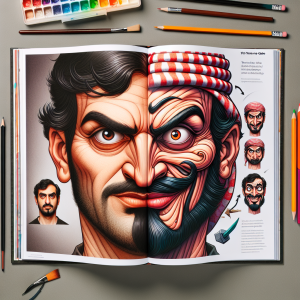Are you addicted to using cartoon face filters on your favorite social media platforms? Well, get ready to be blown away because the future of face filters is about to get even more exciting! From cat ears and puppy noses to full-blown cartoon character transformations, face filters have come a long way in recent years. But what’s next for this fun and addictive technology? Let’s dive in and explore the future of face filters!
Advancements in Face Filter Technology
Face filter technology has evolved at a rapid pace in recent years, with advancements in augmented reality (AR) and artificial intelligence (AI) making it possible to create incredibly realistic and immersive filters. From Snapchat’s famous dancing hot dog to Instagram’s popular “baby face” filter, the possibilities for creative and entertaining face filters seem endless.
Developers and tech companies are constantly pushing the boundaries of what is possible with face filters, using AI to improve the accuracy and realism of filters, and AR to create more immersive and interactive experiences. As a result, we can expect to see even more mind-blowing face filters in the near future.
The Future of Cartoon Face Filters
When it comes to cartoon face filters, the future is looking brighter than ever. With advancements in AI and AR, we can expect to see even more realistic and lifelike cartoon transformations. Imagine being able to turn yourself into a Pixar-quality animated character, complete with expressive facial animations and fluid movements. The possibilities are truly endless!
But it’s not just about creating more realistic cartoon transformations. Developers are also working on making cartoon face filters more interactive and customizable. Imagine being able to create your own custom cartoon avatar, with the ability to change your hair, clothing, and accessories in real-time. The future of cartoon face filters is all about giving users more creative control and freedom to express themselves in new and exciting ways.
Integration with Virtual Reality
As virtual reality (VR) continues to gain popularity, we can expect to see face filters integrated with VR technology in the future. This could open up a whole new world of possibilities for immersive and interactive face filters, allowing users to experience cartoon transformations in a 360-degree virtual environment.
Imagine being able to step into a virtual world and interact with others as a cartoon character, with full-body tracking and spatial awareness. The potential for social interactions and storytelling in VR is immense, and the integration of face filters will only serve to enhance this experience.
FAQs
What are the current limitations of face filter technology?
While face filter technology has come a long way, there are still some limitations that developers are working to overcome. One of the biggest challenges is creating realistic and accurate facial tracking, especially in diverse lighting conditions and with different facial expressions. Additionally, there is room for improvement in the areas of skin tone and gender representation in face filters.
Will face filters become more interactive in the future?
Yes, developers are actively working on making face filters more interactive and customizable. We can expect to see new features that allow users to create their own custom avatars and accessories, as well as more immersive and interactive experiences in virtual reality.
What are some potential ethical concerns related to face filter technology?
As with any emerging technology, there are potential ethical concerns related to face filters. These include issues related to privacy, consent, and the impact of unrealistic beauty standards. It’s important for developers to consider these concerns and work to address them as face filter technology continues to advance.
How can I stay updated on the latest advancements in face filter technology?
To stay updated on the latest advancements in face filter technology, follow tech blogs, social media platforms, and industry conferences. You can also join communities and forums dedicated to AR and AI technology to connect with other enthusiasts and stay informed about the latest developments.
What are some potential applications of face filter technology beyond social media?
Face filter technology has applications beyond social media, including in healthcare, education, and entertainment. For example, developers are exploring the potential for using face filters in telemedicine to enhance doctor-patient interactions, as well as in educational settings to create immersive and engaging learning experiences.








+ There are no comments
Add yours